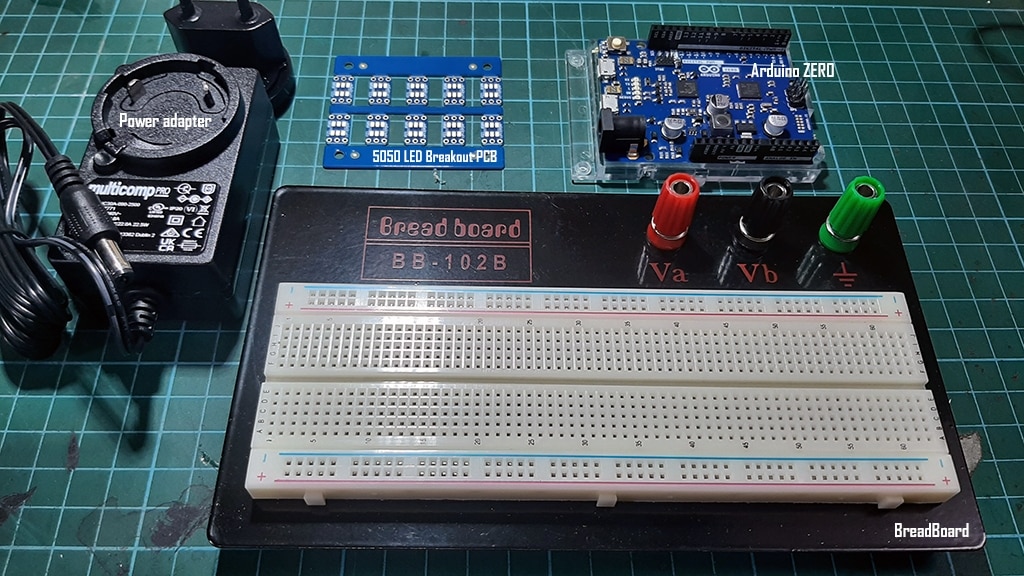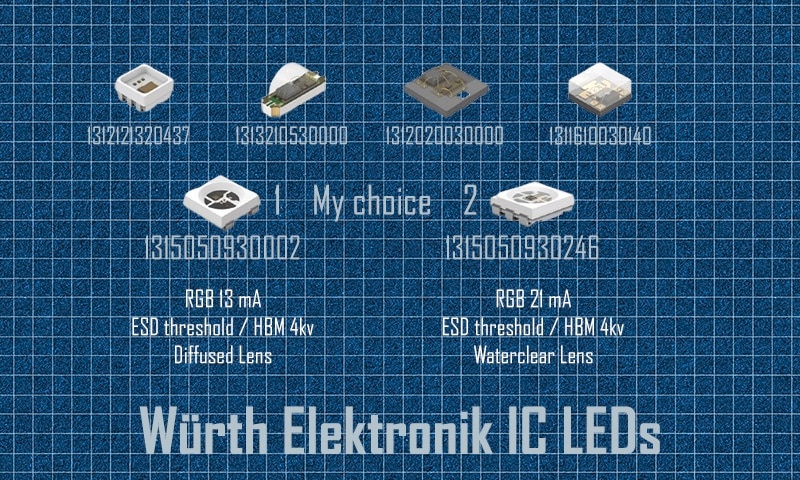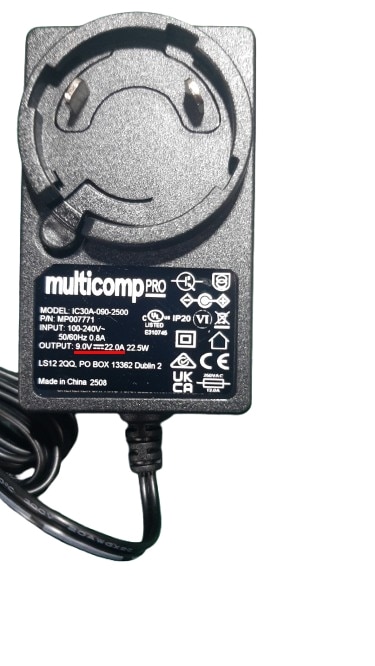| Blog No. | Link | Date |
|---|---|---|
| 01 | Kickoff & Concept | 08 OCT 25 |
By: Md. Kamrul Hussain
Blog Type: Forum Post Date: 08 Oct 2025 Blog no.: 01
Category: Design Challenge - Light Up Your Life
Light in the Blood: From Physics to Physiology
A journey from Beer–Lambert’s law to your own heartbeat, lit in living color
Kickoff & Concept
Table of Contents
The Story...
As you are reading this blog, I believe that you are a big fan of STEM, right? Me too…. But getting introduced with science doesn’t always straight forward. Rather, it often came in fragments. It gives hard time to correlate, like — a physics class on optics, a separate biology lesson on the heart, and an electronics lab full of circuits. Each subject stood tall on its own, but rarely did they come together to form a bigger picture.
Yet, some of the most powerful learning experiences happen when the walls between disciplines fade away. Imagine a classroom where a student learns about light not just as rays and wavelengths on a chalkboard, but as something that can pass through a liquid, change color, and reveal invisible information about the world around us. Imagine pairing that with electronics, where a tiny sensor and a microcontroller capture that light, process it, and display it as glowing patterns. And then imagine tying it all back to biology, where that same principle explains how blood absorbs light and how we can see our own heartbeat with nothing more than an LED and a detector.
This is where STEM becomes inspiring — when a student sees that physics, electronics, and biology are not separate silos, but parts of the same story.
My project for the Light Up Your Life challenge is built on that story. It is called “Light in the Blood: From Physics to Physiology.” It begins with a simple, beautiful experiment: shining red, green, and blue light through a cuvette filled with colored liquid and seeing how the colors fade according to the Beer–Lambert law. And then, it takes a leap into the human body — using a photoplethysmography (PPG) sensor on the fingertip to reveal how blood itself absorbs light differently with each heartbeat.
The result is not just data, but a living light sculpture: where heartbeat pulse made visible as ripples of color across a chain of LEDs. For a student, it’s more than an experiment — it’s a moment of discovery. Light, optics, electronics, and biology come together to show them something about their own body, in real time, glowing in front of their eyes.
That is the spirit of STEM education I believe in, and that is the journey I want to share in this challenge.
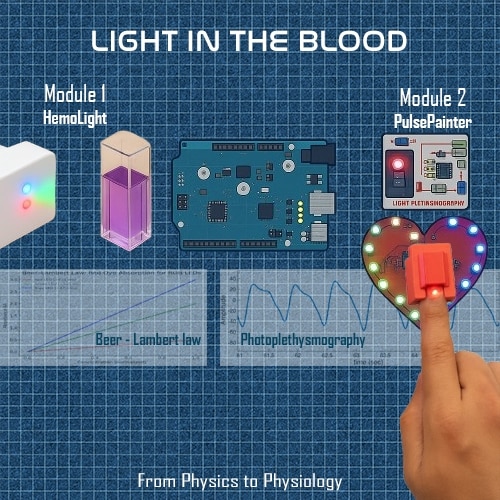
My Journey with PPG —
From “Pulse Hunter” to Today...
This challenge feels like a continuation of a journey I started years ago. I have worked extensively on photoplethysmography (PPG) — a technique where light is shone into tissue, and the reflected or transmitted light reveals blood volume changes with each heartbeat.
In fact, in a previous element14 design challenge, I created a project called “Pulse Hunter”, which focused on the analog front-end circuitry of PPG. I designed filters, amplifiers, and conditioning stages to make the tiny pulse signals visible and reliable. That project was recognized with an award — a milestone that encouraged me to dive deeper into biomedical instrumentation.
At BiBEAT Ltd, the company I represent, we even developed PPG lab kits that are now being used in biomedical engineering education. These kits help students understand how sensors, electronics, and physiology connect — exactly the kind of integrated learning that STEM should promote.
So for me, this project isn’t just about lights and circuits. It’s about continuing a vision: making complex science tangible and inspiring for learners.
The Project Concept -
Light in the Blood
Light has always been one of science’s simplest tools, yet one of its most revealing.
From Newton’s prism to modern pulse oximeters, we’ve used light to uncover invisible truths.
This project, Light in the Blood, invites students, enthusiasts, and curious minds to explore how light interacts with matter — first in a controlled lab setup using Beer–Lambert’s law, and then in their own bodies through photoplethysmography (PPG).
It’s a hands-on journey: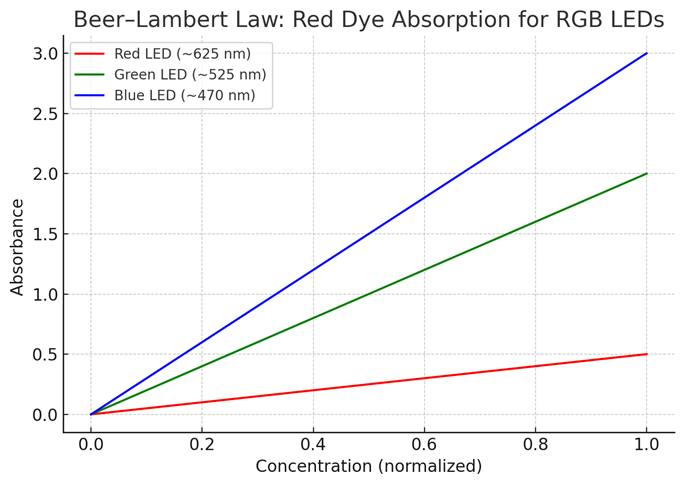
Step 1: See how different wavelengths are absorbed by colored solutions.
Step 2: Watch how your own blood changes the absorption in real time, as your heart beats.
Step 3: Experience those changes as a vivid, dynamic RGB light sculpture.
It’s consists of two modules -
Module 1: HemoLight (Beer–Lambert Demonstrator)
Beer–Lambert Law — Measuring with Light
Beer–Lambert’s law describes how light is absorbed as it passes through a medium:

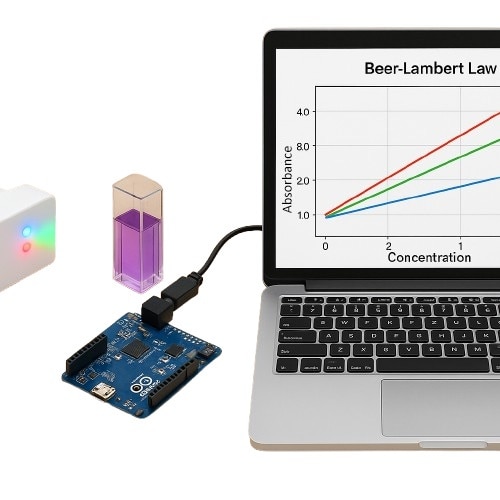
It’s a simple yet powerful relationship: double the concentration, double the absorbance.
By shining pure red, green, and blue light through different solutions and measuring the transmitted intensity, students can see this law in action.
Process -
An RGB LED emitter shines light through cuvettes filled with colored liquids.
A photodiode detector measures the transmitted intensity of red, green, and blue.
The Arduino Zero computes absorbance and plots results that follow the Beer–Lambert law — showing how concentration affects absorption.
Experiments include -
- Absorbance vs. concentration curves.
- Why a red solution transmits red but absorbs green/blue.
- Color mixing and metamerism demonstrations.
Module 2: PulsePainter (PPG Light Sculpture)
Photoplethysmography [PPG] — Listening to Blood with Light
Photoplethysmography is a non-invasive optical technique that measures changes in blood volume in tissue.
- A light source (LED) shines into skin.
- As the heart pumps, blood volume changes cause tiny changes in absorption, which can be recorded using photodiode as a pulse waveform.
In clinical devices, red (~660 nm) and infrared (~940 nm) are used to estimate oxygen saturation. In this educational version, I’ll use RGB LEDs from the kit to demonstrate the principle in the visible range [Red & Green mostly] — focusing on understanding relative absorption differences between colors.
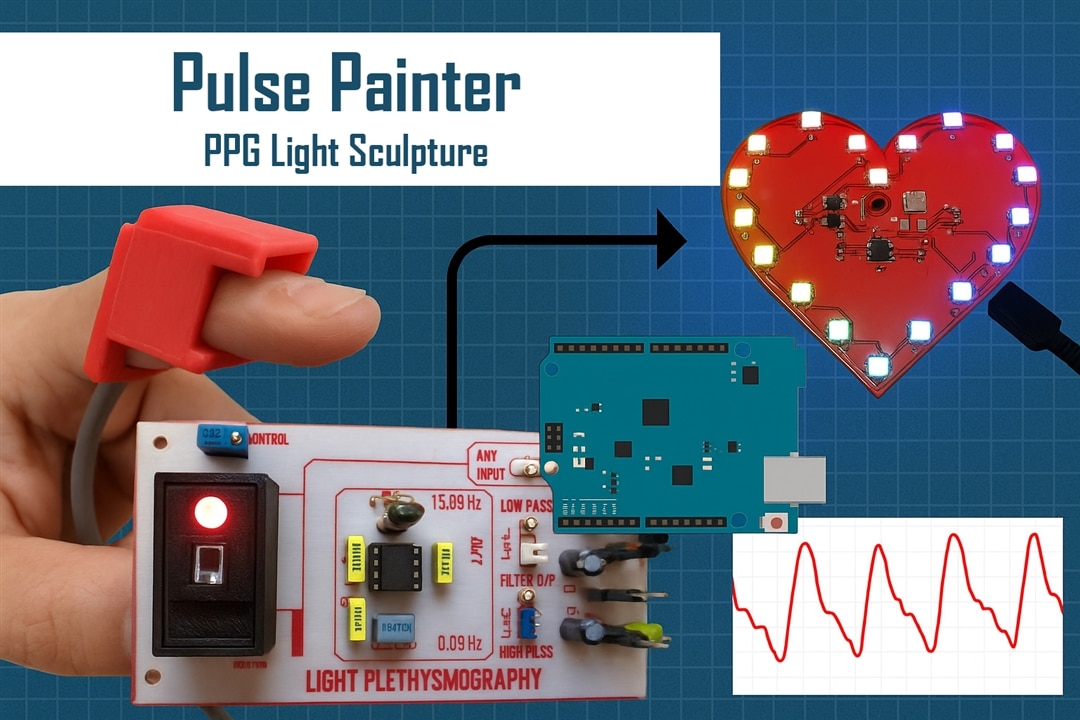
Process -
A PPG probe shines RGB light into a fingertip and measures reflected light.
A photodiode detects the light reflected or transmitted.
A transimpedance amplifier converts the photodiode current into voltage and amplifies the signal. Post processing and gains are added to emphasize the PPG signal.
With the help of Arduino zero, a chain of WL-ICLEDs transforms the pulse into a live light sculpture:
- A heartbeat ripple moving across the LEDs.
- Subtle color blending showing how absorption ratios change in real time.
Together, these modules take students on a journey: from textbook physics in a cuvette to their own physiology at their fingertips.
Unboxing the kit
| {gallery}Kit Unboxing |
|---|
|
Unboxing the kit - Arduino Zero and other accessories. |
|
Unboxing the kit - WL-ICLEDs |
|
Unboxing the kit - Power adapter - 22A!! should be around 2.5A |
The challenge kit contains -
- WL-ICLEDs — RGB LEDs with integrated constant-current drivers for stable color mixing.
- Arduino Zero — my main controller for both sensing and display.
- Level shifter — to interface logic levels properly.
- Power supply — to drive longer chains of LEDs without flicker.
- Breadboards and connectors — for rapid prototyping.
I’ll add my own components (photodiode, amplifier circuit, cuvettes, and 3D-printed holders) to complete the experimental setups.
There is an interesting point I noticed about the power adapter. It’s a 9v adapter which produces about 9.2 v. And it’s supposed to generate around 2.5A current maximum. But the markings showing 22A!!
Primary Choice of LEDs
To serve both Module 1 – HemoLight (Beer–Lambert cuvette rig) and Module 2 – PulsePainter (PPG light sculpture / fingertip sensor), I’ll use two Würth WL-ICLED parts in the same 5050 footprint:
- 1315050930246 — water-clear lens, higher drive
- 1315050930002 — diffused lens, moderate drive
Both are 5050-package WL-ICLEDs and are directly compatible with the 5050 breakout PCBs in the kit
1315050930246 has a water-clear lens with ~21 mA/channel, ~1800 mcd (red). It delivers higher irradiance and a tighter beam. This is ideal for the cuvette path where light must pass through a small aperture and reach the photodiode efficiently. Higher flux = better signal-to-noise for absorbance plots.
1315050930002 has a diffused lens with ~13 mA/channel, ~1300 mcd (red). That makes it plenty bright for a fingertip probe and the LED sculpture, while keeping power/heat modest. Lower peak intensity is more comfortable at skin contact and easier on the analog front end (less TIA – transimpedance amplifier clipping).
Both parts specify ESD / Human Body Model ≈ 4 kV. In an open, hands-on build this rating reduces failures from static discharges. It is especially helpful for the PPG module where users interact directly with the hardware, and the sensor LEDs are in touch with the fingertip.
The Road Ahead — Work Plan
I plan to document this project in 7 build blogs + 1 final post, covering:
- Kickoff & Concept (this blog)
- Building the cuvette rig and first Beer–Lambert tests
- Beer–Lambert experiments: absorbance curves for RGB
- Designing and testing the PPG probe
- Creating the PulsePainter LED sculpture
- Integrating physics + physiology: same math, different worlds
- Educational applications with BiBEAT’s PPG kits
- Final demo video, full report, and reflections
Closing Thoughts
For me, this project is not just about LEDs or sensors. It’s about showing the beauty of connected science. Light, optics, electronics, and biology are all threads of the same fabric. By weaving them together into a simple, hands-on experiment, I hope to spark curiosity, just as mine was sparked when I first saw my own pulse displayed as a waveform.
Now, I want to take it further — to let students not just see their pulse, but to see it come alive in light.
This is the start of that journey.
(Next blog: Building the cuvette rig and testing the Beer–Lambert law with RGB LEDs.)

